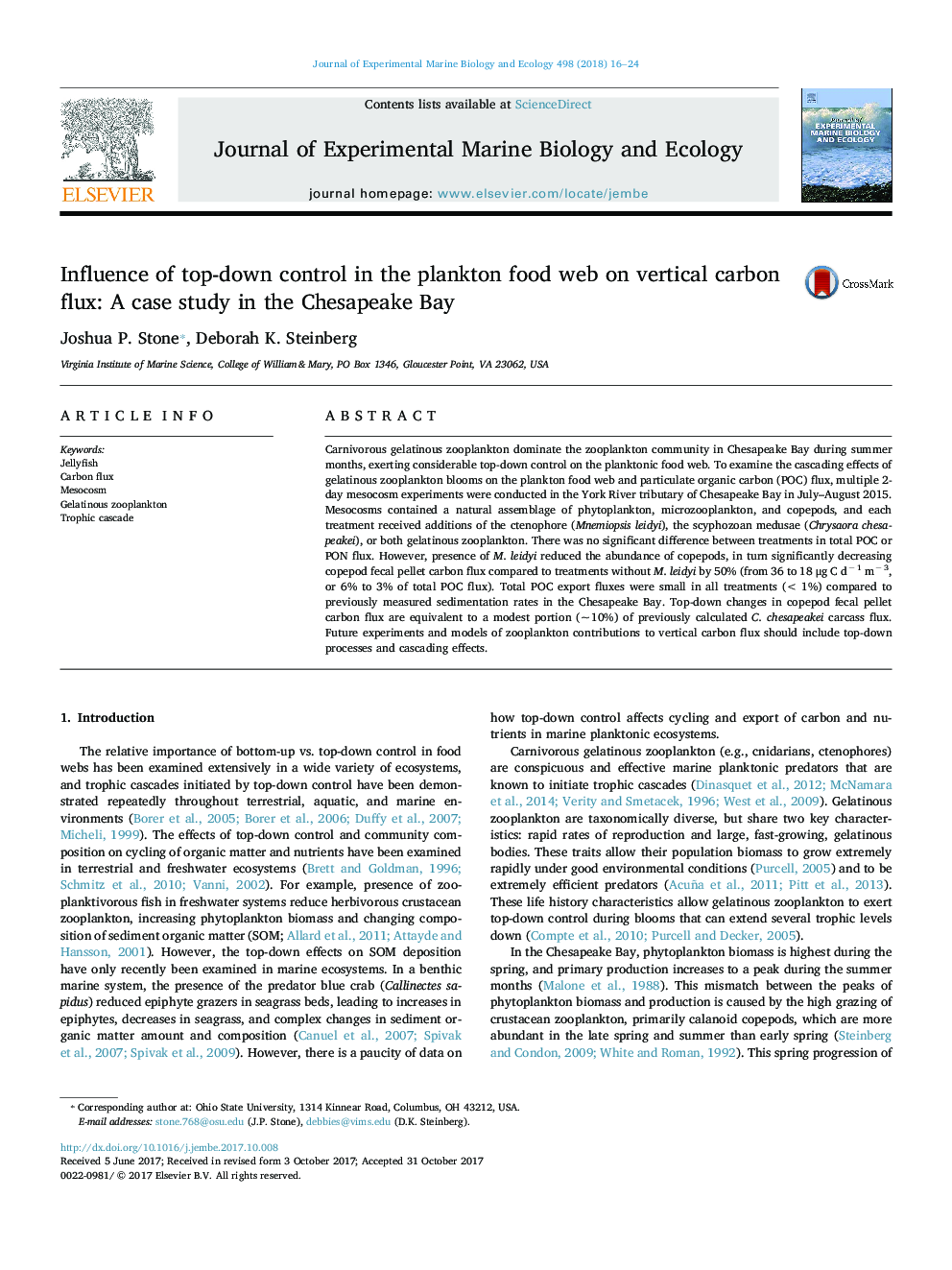| Article ID | Journal | Published Year | Pages | File Type |
|---|---|---|---|---|
| 8849025 | Journal of Experimental Marine Biology and Ecology | 2018 | 9 Pages |
Abstract
Carnivorous gelatinous zooplankton dominate the zooplankton community in Chesapeake Bay during summer months, exerting considerable top-down control on the planktonic food web. To examine the cascading effects of gelatinous zooplankton blooms on the plankton food web and particulate organic carbon (POC) flux, multiple 2-day mesocosm experiments were conducted in the York River tributary of Chesapeake Bay in July-August 2015. Mesocosms contained a natural assemblage of phytoplankton, microzooplankton, and copepods, and each treatment received additions of the ctenophore (Mnemiopsis leidyi), the scyphozoan medusae (Chrysaora chesapeakei), or both gelatinous zooplankton. There was no significant difference between treatments in total POC or PON flux. However, presence of M. leidyi reduced the abundance of copepods, in turn significantly decreasing copepod fecal pellet carbon flux compared to treatments without M. leidyi by 50% (from 36 to 18 μg C dâ 1 mâ 3, or 6% to 3% of total POC flux). Total POC export fluxes were small in all treatments (< 1%) compared to previously measured sedimentation rates in the Chesapeake Bay. Top-down changes in copepod fecal pellet carbon flux are equivalent to a modest portion (~ 10%) of previously calculated C. chesapeakei carcass flux. Future experiments and models of zooplankton contributions to vertical carbon flux should include top-down processes and cascading effects.
Related Topics
Life Sciences
Agricultural and Biological Sciences
Aquatic Science
Authors
Joshua P. Stone, Deborah K. Steinberg,
